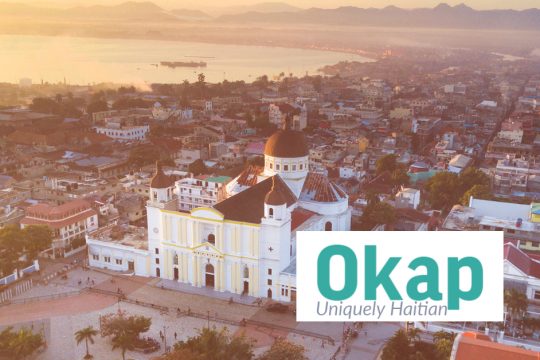During the current epidemic, I’m sure you’ve seen countless pieces centering around positivity. Aiming to uplift during a very heavy time, these were stories featuring miraculous recoveries and heartening statistics. One of these miraculous recoveries was in fact the recovery of our environment. While we stayed inside to keep healthy, nature began to heal. The canals of Venice were clean and clear for the first time in years, bright blue skies appeared over previously polluted city skylines and animals began to reclaim human spaces. Though these changes are unlikely to be permanent, in a time of chaos and uncertainty, it’s been reassuring to many to witness the resilience of our world. The people of Haiti know this resilience very well.
Despite the ravages of many natural disasters and rampant deforestation, the mountainous region remains one of the most biodiverse countries in the entire world.

Biodiversity is the variety of life present in a certain area. Everything from bacteria to birds is included in this, and Haiti is rich with both flora and fauna. Haiti contains nine distinct “life zones”, including coral reefs, mountain ranges, rivers and cloud forests. Life zones are regions characterized by specific plants and animals, e.g. a desert or a forest. The island is home to 5,600 plant species alone, with over a third being endemic to the area.
Haiti’s many life zones and its high biodiversity are likely due to the number of micro-climates in the region. Micro-climates are very much what they sound like; climates restricted to small areas where the surrounding climate differs. An example of one of Haiti’s micro-climates are the valleys in Kenscoff. The region around these valleys are incredibly mountainous and so as height lowers, so does the temperature. These valleys maintain a cooler, less humid climate, perfect for specific species to thrive there that wouldn’t survive in the surrounding climate.
Rare cattleya orchids in particular, thrive in this valley micro-climate and as a result, these beautiful flowers are one of the country’s key exports.

To protect these ecologically valuable areas, in 1983 a law was passed to protect and preserve these regions and two national parks, (zones where hunting, logging and land development would be prohibited) were created. La Visite National Park is situated along the Massive de la selle. This park is home to over 438 plant species, at least 35 of which are endemic to Haiti. Pic Macaya National Park is located on the southern peninsula and contains the Rivière Ravine Sud. Haiti’s incredible cloud forests are located here, along with it’s vibrant orchid species.
In recent years, the environment has suffered due to frequent deforestation and lack of funding. Because of this, reforestation efforts in Haiti are always at the forefront of environmental plans as well as efforts to have the island’s two National Parks more strictly maintained. In 2011, 300,000 seedlings were planted in La Visite national park in memory of those lost in the 2010 earthquake.
More recently in 2015, Grand Bois was named a national park and, in 2019 with funding from Global Wildlife Conservation and Rainforest Trust, became a private nature reserve with the aim of protecting the island’s 42 threatened and endangered species.
Undoubtedly, this is only the beginning. Haiti’s once lush forests will hopefully flourish again before long. We’ve seen firsthand just how resilient nature can be with just a little care.
As the global lock-downs lift and we venture out into the world once more, let’s remember to not only be cautious with our own health and the health of others, but the health of our environment as well.
| English | Haitian Creole Translation |
| Biodiversity | Biyodivèsite
Divèsite biyolojik |
| Species | Espès
Ras |
| Ecosystem | Ekosistèm |
| Organism | Òganis |
| Environment | Anviwònman |
| Plants | Plant |
| Animals | Bèt |
| Living | Vivan |
| Climate | Klima |
| Deforestation | Debwazman |
| Reforestation | Rebwazman |

Marleen is a Haitian Creole translator and Language Advocate. After completing her Graduate Studies at the Institut d’Etudes Politiques de Paris (SciencesPo), she decided to launch Creole Solutions to focus on her mission to promote Haitian language and culture. She worked for the Consulate General of Haiti in Chicago and the United Nations Environment Program in Haiti.
Marleen se yon tradiktris k ap travay pou defann dwa lang. Apre li te fini ak etid siperyè li nan Institut d’Etudes Politiques de Paris (SciencesPo), Marleen te deside lanse Creole Solutions pou konsantre sou misyon li pou voye lang ak kilti lakay monte. Avan sa li te travay pou Konsila Jeneral Ayiti nan Chikago ak Pwogram Nasyonzini pou Anviwònman an Ayiti.







